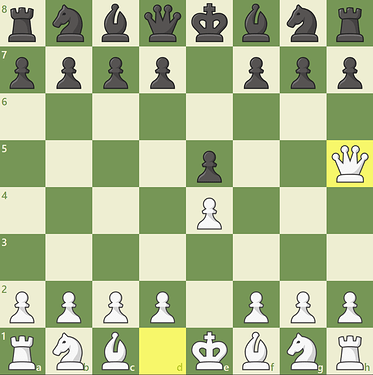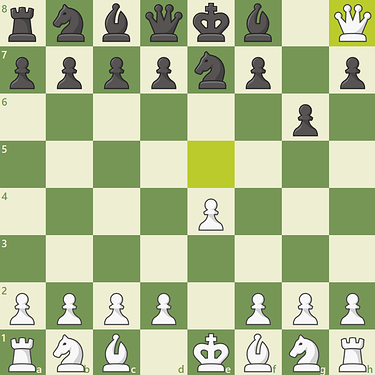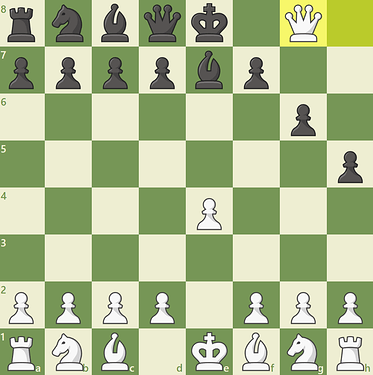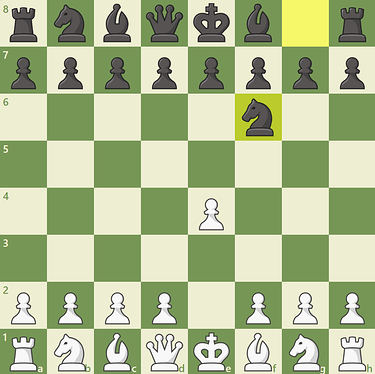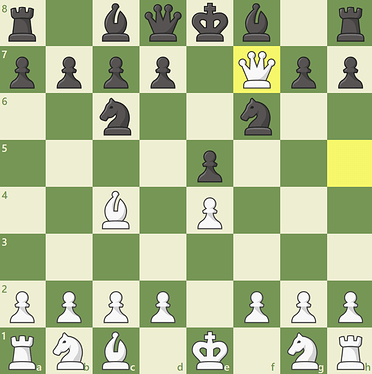The Danvers Opening, commonly known as the Wayward Queen Attack, is an unusual chess opening that involves White rapidly developing their queen to flank and spank Black’s trapped pieces. White is usually the only side that can execute this maneuver, since White is the one who moves first every game.
This opening causes a lot of distress amongst beginners although it can be just as easily countered. It first starts off with a basic King’s Pawn Opening (pawn to E4), developing the queen and gaining a foothold in the middle of the board. A conventional Black response would be to counter the pawn and move one of their own to E5. White quickly attacks this by moving their queen to H5. This completes the Wayward Queen Attack, although what follows can be detrimental to either White or Black.
One of Black’s common maneuvers is pawn to G6, which attacks the queen. Although threatened, White’s queen can now capture the pawn on E5, resulting in an advantage in material while checking Black’s king.
Now, Black will have three ways to escape the check: defend with the queen, bishop, or knight. However, only one choice can prevent the further loss of material.
White’s queen can now easily cram themselves into Black’s corner of the board while capturing one of their rooks. Defending with the knight is the best possible solution; if the knight had stayed while the queen or bishop blocked the check, White’s queen would’ve been able to capture it and move on to check Black’s king again.
This would be an immense blow to Black’s morale; the opponent’s most powerful piece is sitting right next to them, and they’ve just lost significant amounts of material and must allocate more pieces to prevent White’s queen from wreaking more havoc/escaping. With the initiative at hand, White can now develop more of their pieces and go on the offensive.
Personally, most of the games I play with the Danvers Opening tend to result in Black’s immediate resignation.
However, if Black knows what they’re doing, they can easily parry the opening and provide a powerful counterattack. If Black opens with either of their knights, they can force White to look for alternatives.
Black attacks the pawn on E4 by moving their knight to F6, while preventing the queen from moving to H5
Black responds with pawn to E5, but immediately guards it with knight to C6, successfully defending against the Danvers Opening. They could alternatively move the knight first, which would still threaten White’s queen should she move to E5 regardless.
Even though White’s queen is now in an unfavorable position, White can still be able to achieve a Scholar’s Mate (checkmate in 4 moves) if played correctly. It involves developing their bishop to C4 and then having it guard the queen as she moves in to check Black’s king.
The Scholar’s Mate, the second quickest checkmate only surpassed by the 2-move Fool’s Mate
I do not use standard algebraic notation when identifying moves so that beginners can still understand what I’m talking about, and not just read a bunch of gibberish characters.
